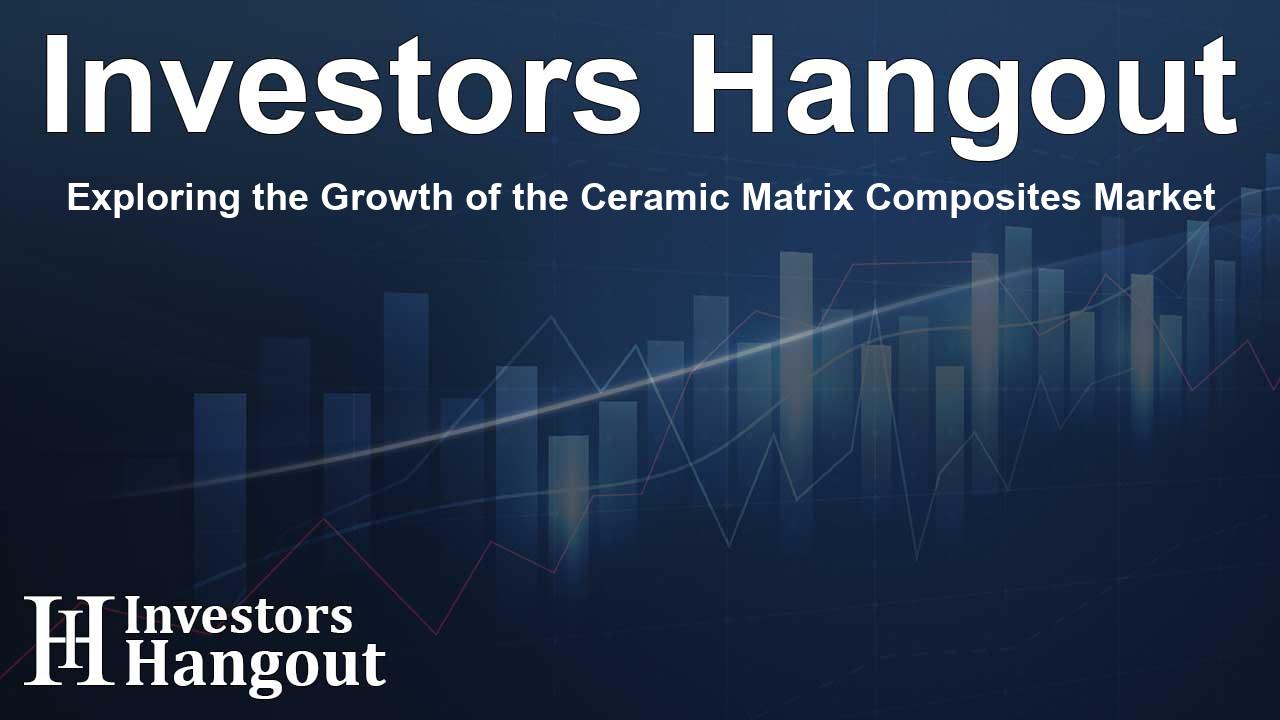Exploring the Growth of the Ceramic Matrix Composites Market

Ceramic Matrix Composites Market Overview
In recent years, the demand for ceramic matrix composites (CMCs) has surged, with the market valuation expected to increase significantly from USD 12 billion to USD 21.61 billion by 2030. This impressive growth reflects a compound annual growth rate (CAGR) of 10.3%. Various industries, particularly aerospace, defense, and energy, are driving this upward trend due to the unique properties CMCs possess, including lightweight characteristics and exceptional thermal stability.
Applications and Advantages of Ceramic Matrix Composites
The versatility of ceramic matrix composites makes them indispensable across multiple sectors. In aerospace, for instance, their ability to withstand high temperatures and reduce weight contributes directly to improved fuel efficiency and overall aircraft performance. CMCs are crucial for components like turbine blades and thermal protection systems, where their resilience under stress is paramount.
Innovations and Technological Advancements
Technological advancements in the manufacturing processes of ceramic matrix composites are notable. Enhanced techniques are improving their strength, durability, and manufacturing efficiency, making them more accessible for various applications. These innovations support the increasing reliance on CMCs within industries that prioritize both performance and sustainability.
Market Drivers: Demand and Opportunities
The push for lightweight and fuel-efficient vehicles in the automotive sector is a significant driver for the ceramic matrix composites market. Companies are gravitating towards materials that not only minimize weight but also enhance operational efficiency. Likewise, the rise in military and commercial aircraft demand propels the need for advanced composite materials.
Challenges in Ceramic Matrix Composites Market
Despite the positive outlook, the ceramic matrix composites market faces challenges, including higher production costs compared to traditional materials like metals. Additionally, issues around recyclability and reparability can limit the adoption of CMCs in some industries. Companies are now focusing on addressing these challenges to ensure broader acceptance of CMCs.
Segmentation of the Ceramic Matrix Composites Market
The market segmentation of ceramic matrix composites provides insight into diverse product forms and their applications. Continuous fiber types and woven fibers stand out for their strength and thermal resistance. Continuous fibers offer excellent load capacity, while woven fibers enhance damage resistance through their unique interlacing structure. Each type serves specific industry needs, reflecting the tailored usability of CMCs.
Key Players in the Ceramic Matrix Composites Market
Several notable companies are key players in the ceramic matrix composites market, including GE Aerospace, Rolls-Royce plc, and SGL Carbon. These organizations are leading innovation, pushing the boundaries of CMC applications, and investing heavily in research and development to maintain competitive advantages.
Regional Analysis of the Ceramic Matrix Composites Market
Geographically, the North American market showcases the highest growth for ceramic matrix composites, driven primarily by the U.S. aerospace and automotive sectors. The push for advanced composite materials in these industries is fostering a landscape ripe for collaboration between manufacturers, which encourages technological advancements.
Future Outlook for the Ceramic Matrix Composites Market
Looking ahead, the ceramic matrix composites market holds vast potential as industries continue to prioritize lightweight solutions without sacrificing durability. The continual expansion in manufacturing capabilities and growing recognition of the importance of CMCs will likely drive the market forward.
Frequently Asked Questions
What are ceramic matrix composites?
Ceramic matrix composites (CMCs) are composite materials composed of ceramic fibers within a ceramic matrix, designed to enhance properties like toughness and thermal stability.
What industries utilize ceramic matrix composites?
Key industries include aerospace and defense, automotive, energy, and power, where CMCs provide superior performance characteristics.
What advantages do CMCs offer over traditional materials?
CMCs offer lightweight properties, high thermal resistance, and durability, making them ideal for high-performance applications.
Who are the leading companies in the ceramic matrix composites market?
Key players include GE Aerospace, Rolls-Royce plc, and SGL Carbon, who are heavily investing in CMC technology and applications.
What is the projected growth for the ceramic matrix composites market?
The market is projected to grow from USD 12 billion in 2024 to USD 21.61 billion by 2030, reflecting a CAGR of 10.3%.
About The Author
Contact Caleb Price privately here. Or send an email with ATTN: Caleb Price as the subject to contact@investorshangout.com.
About Investors Hangout
Investors Hangout is a leading online stock forum for financial discussion and learning, offering a wide range of free tools and resources. It draws in traders of all levels, who exchange market knowledge, investigate trading tactics, and keep an eye on industry developments in real time. Featuring financial articles, stock message boards, quotes, charts, company profiles, and live news updates. Through cooperative learning and a wealth of informational resources, it helps users from novices creating their first portfolios to experts honing their techniques. Join Investors Hangout today: https://investorshangout.com/
The content of this article is based on factual, publicly available information and does not represent legal, financial, or investment advice. Investors Hangout does not offer financial advice, and the author is not a licensed financial advisor. Consult a qualified advisor before making any financial or investment decisions based on this article. This article should not be considered advice to purchase, sell, or hold any securities or other investments. If any of the material provided here is inaccurate, please contact us for corrections.
